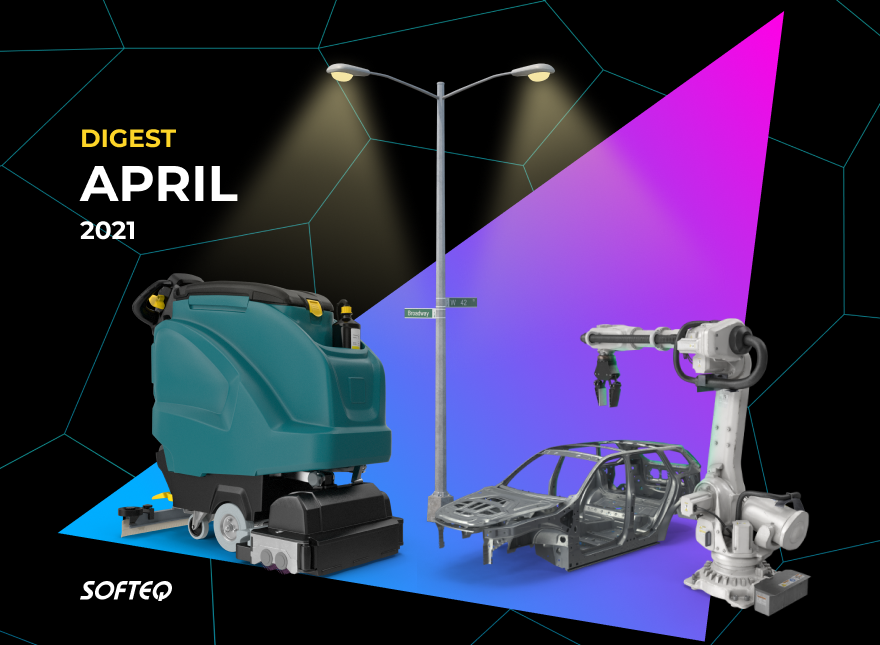This is What Techies Talked About in April

In this issue of the Tech Digest: a tech giant will contribute to mitigating the global semiconductor shortage; humble lampposts can make urban spaces smarter and more efficient; autonomous driving is one step closer. All that and more in a 10-minute read.
This New Kind of Sensor Breaks New Ground for Autonomous Driving
Self-driving vehicles will save millions of lives and transform the economy. Before they become mainstream, they need to be able to navigate safely and reliably in all types of road and weather conditions. And here is how one company’s newest sensor enables just that by radically reducing navigation failure rates.
The company is WaveSense, which has recently introduced a technology called Ground Positioning Radar (GPR). GPR is an ultra-wide band radar that lets vehicles accurately map their location and navigate in poorly-marked road surfaces, off-road terrain, and inclement weather. Read what role the technology plays in the crucial adoption phase of autonomous driving, and how the company plans to transform the future of transport.
Simple Lampposts can Make Cities Smarter
For all the new tech gadgets that might spring to mind when thinking of smart cities, there is one centuries-old installation that has the potential to make urban spaces much more efficient. What is this?
According to a new report called “Shining a Global Light”, urban engineers should recognize the untapped potential of the poles that illuminate cities at night. For instance, fitted with image sensors, a lamppost could monitor parking, identify proximity, count pedestrians, and more. Investing in lampposts could also provide a helping hand in assisting the re-opening and recovery of cities as the COVID-19 pandemic slowly recedes. Read how cities can re-use infrastructure that has been with us for centuries—and get real benefits from it.
Retail Reveals the Value of Robotic Automation in the Pandemic
One of the striking trends during the pandemic has been the acceptance of automation technologies by all industries. And it seems that retail remains at the forefront of that trend.
RetailWire and Brain Corp is an AI company creating core technology in robotics. Their robots are used for floor cleaning and shelf scanning in stores and warehouses, and are sold briskly today. Moreover, retail companies show ever-growing interest in further adoption of robots in their everyday operation. Learn how retailers can make triage decisions and increase store productivity by using robots.
Disruptive Solutions Announced at Nvidia's GTC 2021 Conference
Nvidia’s GTC is the number one AI conference for innovators, technologists, and creators. With over 1600 sessions on the latest advancements in AI, data centers, accelerated computing, healthcare, intelligent networking, game development, and more—there is something for everyone at GTC.
This year Nvidia unveiled a next-generation data processing unit, new enterprise GPUs, a new autonomous driving SOC, and other breakthrough products. Learn more about the conference and innovative solutions presented at it.
Intel Steps In to Alleviate Chip Shortage for Automakers
Auto manufacturers hope that the global chip shortage will end soon, but semiconductor supply chains may not recover until next year, experts say. Now Intel could become a global foundry for the car industry: it seeks to address the deficit that has stalled the production of new vehicles, introducing an alleviation plan.
Intel’s CEO Pat Gelsinger told Reuters that they’re negotiating with companies that design chips for carmakers about the possibility of manufacturing them inside Intel’s factory network. Intel could be producing the parts within six to nine months, he said. Read more on the company’s plans to help solve the problem.
